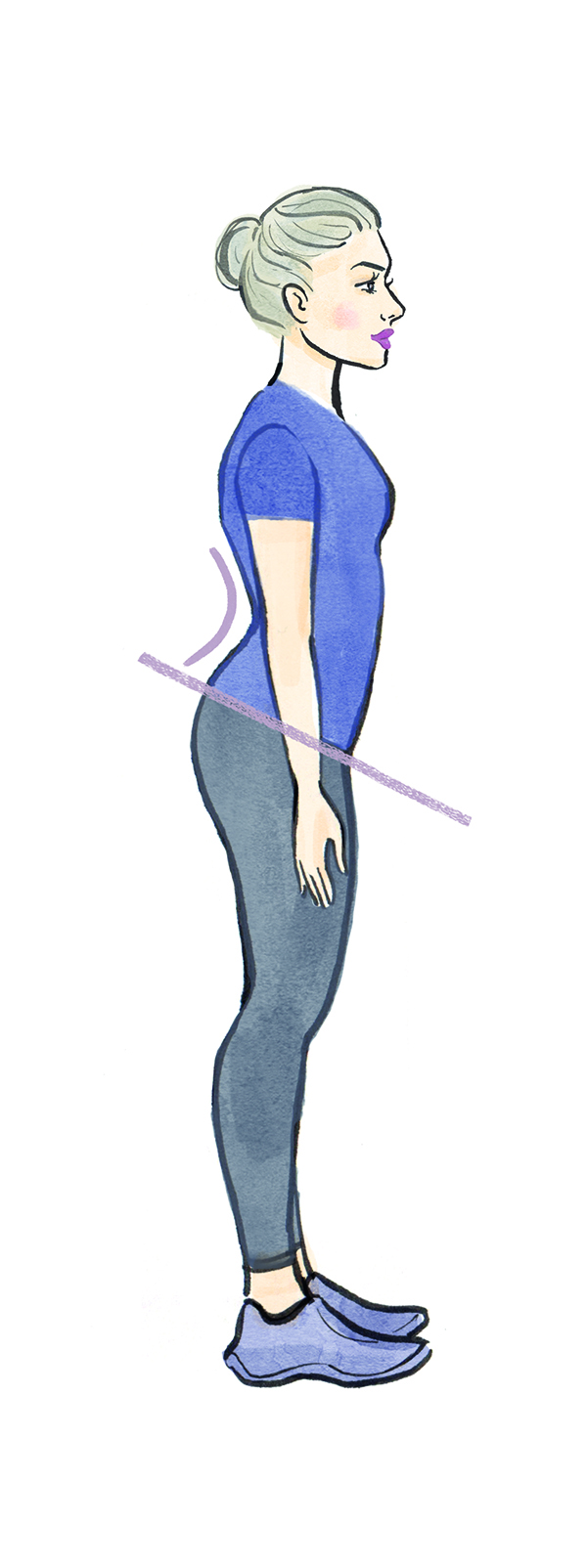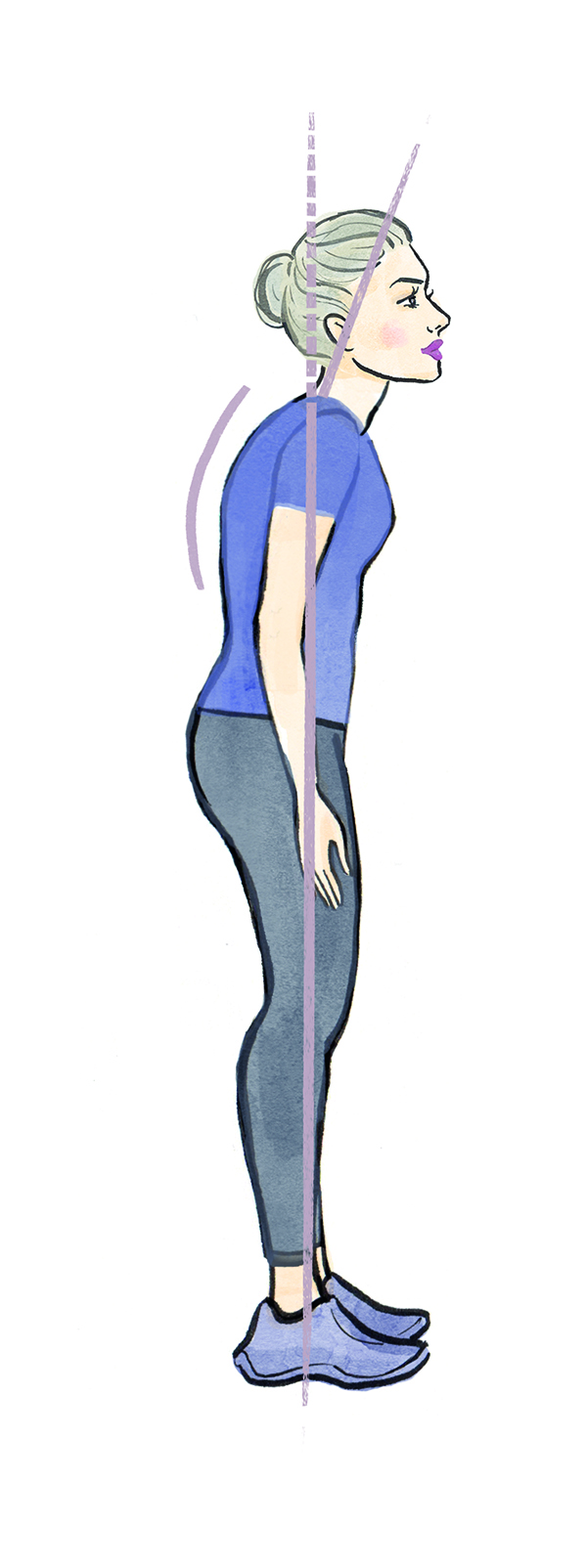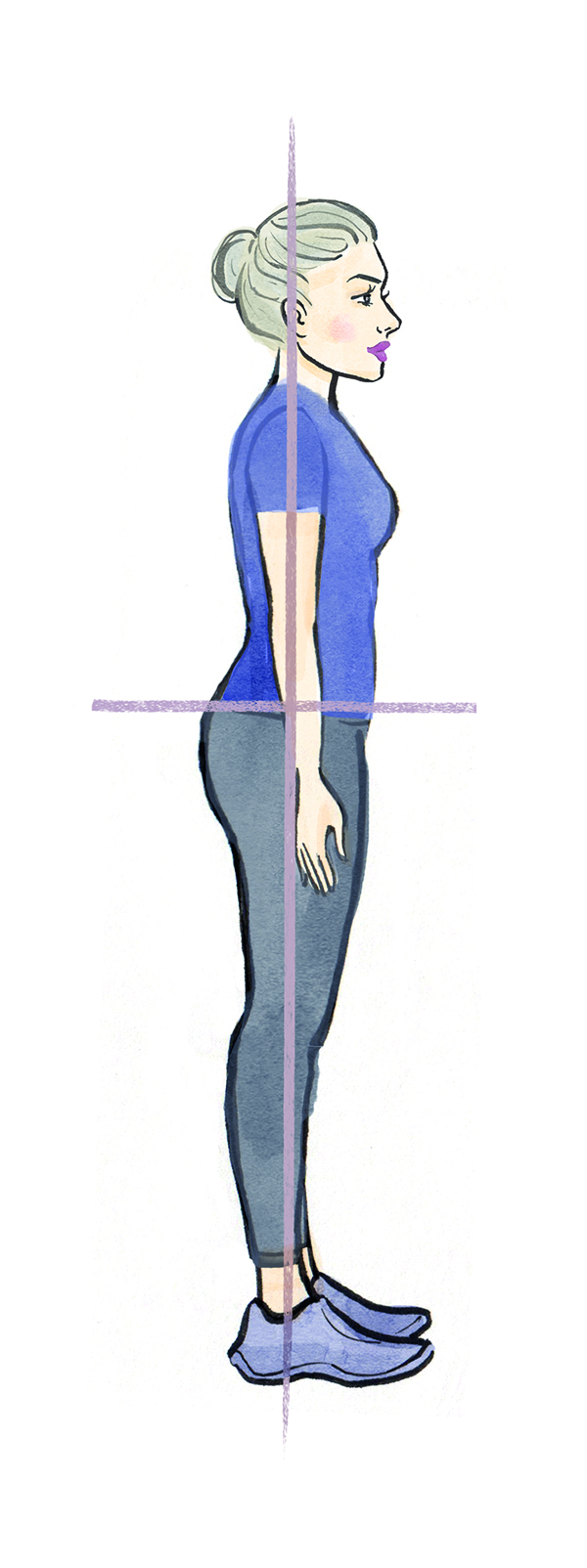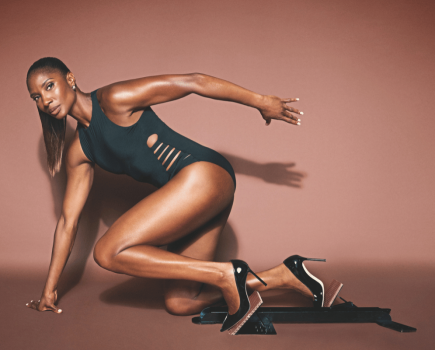When it comes to getting and staying fit, it pays to know your posture type. Here’s why, plus the 10-minute workout to suit you.
By Katherine Watt
With it being a new year and a new decade, you’re probably raring to go with a full-on new fitness routine. And it’s great to start out as you mean to go on, but before you hit the heavy weights, it’s important to understand where your body is at right now, and to consider what foundations you’ll be building upon.
No matter what your current level of fitness, your body’s posture will determine which types of exercises will best suit you. ‘Your posture is the foundation of your movement. If it’s bad, you’ll have pressure in different areas of your body,’ says Nolan Sunnassee, founder of Online Personal Training (onlinepersonal training.tv).
‘Think of it like a motorway: if lanes are blocked off, the cars have fewer lanes to flow along so traffic builds up, just as in your body, if areas are under tension or pinched off, fluids such as blood and lymph can’t flow around as well. Having good posture helps everything flow.’
The stronger the signal, the better the response
Exercising involves your muscles, bones and nervous system. ‘The nervous system fires signals to the muscles to tell them to move, and they in turn pull on the bones to move your body. But if there is too much tension in a muscle it creates interference in the signal being sent. Imagine your nervous system as a mobile phone signal: the stronger the signal, the better response you’ll get from your body,’ says Nolan.
‘When some muscles are tight, it interferes with the signal, blocking part of it from the weaker muscles. Over time, this leads to even more pronounced imbalances with some muscles stronger and others weaker.’
This is why it’s good to have balance and alignment throughout your body before you embark on any strenuous exercise programme. ‘When your body is in balance, it’s more effective at moving. It dissipates natural forces more evenly,’ he says.
The main benefits of having well-aligned posture are that you’re not only stronger, but you’re less likely to pick up injuries. You can also progress further in your workouts.
There are at least half a dozen misaligned posture types but two of the most common, as well as the ideal, neutral spine, posture, are explained below…
 Lower cross syndrome (L-Plan)
Lower cross syndrome (L-Plan)
This posture type is where you’ve got a noticeable curve in your lower back – more than the natural S shape of the spine. ‘It can mean your hip flexors and lower back are tight and your abs and glutes are likely to be weak,’ says Nolan.
‘With this sort of posture it’s best to do glute-strengthening exercises. Begin on the floor, to build up strength, before moving on to standing exercise. Begin with glute bridges, one leg at a time, and the clam, where you lay on your side and, with heels together, open your knees wide, before moving on to standing lunges and single leg reaches, where you stand on one leg and reach forward.
 Upper Cross Syndrome (U-Plan)
Upper Cross Syndrome (U-Plan)
This is where you have rounded shoulders leading to more strain on your neck, which will be pulled forward by your chin protruding, even if slightly.
‘For every inch your chin goes forward, it doubles the weight of your head on your neck muscles,’ says Nolan. This increased strain can lead to headaches and dysfunction in the shoulder girdle where it doesn’t sit properly in the socket.
Also, rounded shoulders can make your breathing shallower, affecting your energy and mood. If you are texting, or sitting for long periods you’re being pulled forward and over time this changes the length of your muscles, shortening some and lengthening others.
Moves that retract your shoulder blades and create external rotation in your arms and hands are good, such as seated rows, body rows (like a reverse press up), bent-over rows, and anything where you pull your arms and shoulder blades back and down.
 Neutral spine (N-Plan)
Neutral spine (N-Plan)
Neutral spine is where the curves are not pronounced. Looking from the side on, your ankle, knee, hip, shoulder and ear would all pretty much stack on top of each other in a line.
The spine is completely flat. It’s not meant to be – there should be a gentle S-shape. This is the ideal posture.
It means you can do most exercises although you still have to learn how to do them with correct form, and good posture.
What’s your type?
Here’s how to determine your posture type…
1 Ask someone to take a picture of you, standing upright from sideways on. Take a look at how your posture looks.
2 Compare your posture to the ilustrations shown on the left. Which one most resembles how you stand? Look in particular at the upper back and neck area, and the lumbar spine.
3 Identify your posture type then perform the beginner’s training plan for that type. You can find longer workouts with even more exercises at onlinepersonaltraining.tv.
U-PLAN EXERCISES
Step-ups on a stair – 2 sets of 20 reps
Standing in front of the step, plant your right leg on it, ensuring your heel lands first
Drive through the heel and propel yourself up onto the step.
Step down on the opposite foot, repeat on the same leg for 10 reps then switch legs.
Prone cobra – 2 sets of 20 reps
Lying face down, keep your chin tucked in,
Pull your shoulders towards each other, so your arms and shoulders come off the mat, thumbs towards the ceiling. Don’t go too high as you want to avoid engaging your lower back. Keep the movement focused in your upper back.
Hold at the top for a second, then slowly lower.
Jog on the spot – 2 sets of 30 seconds
Jog on the spot as fast as you can, alternating legs and touching the other toe down as lightly as possible.
Table position with elbow rotations – 2 sets of 20 reps
Go onto your hands and knees and keep your back flat.
Rotate your head and one arm/elbow up towards the ceiling.
Lower your arm down again then repeat on the other side.
Single-leg toe touches 2 sets of 20 reps
Put a foam roller or other similar object in front of you. Stand on one leg and focus on the object.
Maintain good posture and reach your leg out to touch the object – it must be far enough away to be challenging, so your leg is straight.
Repeat for 10 reps then change and do it on the other leg.
Quick step touches – 2 sets of 30 seconds
Stand next to a step or stairs.
Raise your knees alternately and quickly to touch the step with one foot then the other.
As you are removing one foot, jump to replace it straight away with the other one.
L-PLAN EXERCISES
Step-ups (on stairs) – 2 sets of 20
Ensure your heel is fully on the step.
Drive through the leg on the step to bring your other foot up too.
Step down with one leg at a time then repeat. Change the leading leg after 10 reps.
Push-ups (neutral hand position) – 2 sets of 20
Keep your chest forward and hips in line. Don’t let your bum stick up.
Press away from the floor fast as
you can.
If you can’t do it on your toes, go onto your knees.
Jog on the spot – 2 sets of 30 seconds
Jog on the spot as fast as you can, alternating legs and touching the other toe down as lightly as possible.
Hip extension – 2 sets of 20
Have your feet shoulder-width apart.
Squeeze from your buttocks and lift your hips.
Stop when your hips make a straight line from shoulders to knees.
Single arm rows – 2 sets of 20
Keep your back flat with a neutral spine.
Draw the weight up with your elbow going towards your hip.
Pause at the top before slowly lowering the weight.
Jumping jacks – 2 sets of 30
Standing with feet slightly apart.
Jump your feet wide and at the same time take your arms up and above your head, touching your fingers together.
Jump back in and lower your arms – do it as fast as you can.
N-PLAN EXERCISES
Pullovers – 2 sets of 20 reps
Lie on a bench or step, and hold a weight above your head with both hands.
Keeping arms straight, lower the weight behind your head as far as you can, but not so far that it causes strain.
Pause, then slowly move the weight back up again.
Prone cobra – 2 sets of 20 reps
Lying face down, keep your chin tucked in,
Pull your shoulders towards each other, so your arms and shoulders come off the mat, thumbs towards the ceiling. Don’t go too high as you want to avoid engaging your lower back. Keep the movement focused in your upper back.
Hold at the top for a second, then slowly lower.
Vertical jumps – 2 sets of 30 seconds
Stand with good posture
Jump as high as you can go and land softly then repeat for the duration.
Hip extension – 2 sets of 20 reps
Have your feet shoulder-width apart.
Squeeze from your buttocks and lift your hips.
Stop when you hips make a straight line from shoulders to knees.
Jog on the spot – 2 sets of 30 seconds
Stand with good posture to start, and your head up.
Jog with high knees for the duration
If your knees are sore, you can step on the spot instead.
Step-ups (on stairs) – 2 sets of 20 reps
Ensure your heel is fully on the step.
Drive through the leg on the step to bring your other foot up too.
Step down with one leg at a time then repeat. Change the leading leg after 10 reps.
Discover how resistance training can help you be stronger and fitter.








